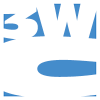How do reflection maps work?
 3WC
Posts: 1,113
3WC
Posts: 1,113
I'm having a hard time getting what I want from a reflection map. An image, when applied as a diffuse map, can all be seen on the surface. The same image applied as a reflection map, however, is blown up so that only a small portion of the image can be seen. Why is that, and how can I change it?


Comments
can you attach a screen shot (before and after render)
The reflection map is a quick way of 'cheating' to allow an item to pretend that it is showing a reflection - thus, I presume, as it is using that image as what it is reflecting (i.e., something external to the item) as opposed to a true reflection of surroundings it would not make sense to have it tiling.
can you attach a screen shot (before and after render)
First image is diffuse map, second is reflection map. See how the reflection map is blown up? It's the same plane, no tiling.
Where/how did you get the screen captures? I've just tried adding the diffuse map to reflection map and not seeing an issue. As an aside, what are the dimensions of the file being used for the map(s)?
I rendered them myself. Simply created a plane in DAZ Studio 4.6, applied the picture as a diffuse map. (Size is 2048 x 1024) Then I applied the same image as a reflection map. The second image is the result. It seems that the reflection map works more like an environment map, as though it were applied to a sphere, but if that's the case, what dimension does it need to be?
IIRC reflection maps are treated like environment maps, in simple terms what that means is that your reflection map is applied to a huge invisible sphere and the image is then projected from that sphere onto the objects in the scene, as a result the objects only ever show small parts of the map.
Yeah, that's what I've started figuring out. Any advice on how to make a reflection map that shows what I want to show?
How do reflection maps work? Answer not very well. No I am not being flippant just a fact that I have found the best is to use raytraced reflections which yes does mean put in something for the surface to reflect. I use planes, sky domes whatever the scene requires. I also use Uber Surface a lot as it has a blurred reflection setting.
If you must use a map, try a spherically mapped environment image (but even there, it isn't perfect - see the thread on Car Ranger in Members Only).
Yeah, that's what I've started figuring out. Any advice on how to make a reflection map that shows what I want to show?
If you mean a reflection map that follows the UV like it does when plugged into Diffuse, then you only have one choice, the Shader Mixer, by plugging an Image Map brick into Reflection Color and then adding the reflection map to the Image Map brick.
Ok, that works, except the shader mixer resets everything, and you need an image map brick for each part of your material, diffuse, reflection, and opacity, but I think I can live with that.
Here's the result using 3 image map bricks: one for the video game bezel image, another for the opacity map to let the video screen show through, and another for the reflection to show part of the arcade behind the game.
If you feel satisfied that your issue is solved, feel free to ignore my explanation. It doesn't seem like your question was completely answered but generally you got advice that must have helped.
Part of my confusion is that your FIRST picture IS a reflection map, called an Environment Map by DS.
But what you were saying was that you rendered that Spherical map in the diffuse channel on a plane and that top image was the result, the image itself.
The lower or second image you put in the reflection colour space and rendered the flat plane and all you saw was a small portion of the reflection map.
As someone said, reflection maps are a cheat for ray tracing. That warped image is meant to be on a sphere thats why it gets wider at the top and bottom where the sphere becomes a single point. Without that stretched your reflection map would get all pinched at the top.
The problem that you didn't like with the render result is because you have a plane. The plane is perfectly flat and it will "look out" into the reflection map as if it has been wrapped around the entire world and see only one tiny point on the horizon. That's why the image looked blown up. If that plane were not perfect or if it bent the way old arcade games used to bulge then each of those parts of the curve would look out and see different parts of the reflection map.
There was an old trick of using a bump map to introduce a curve when one was forced to use a plane in a model that needed to be reflective but the best thing is to have the geometry be less than perfectly flat.
Hope that explained more re: how reflection maps work.
Meanwhile in my own parallel hell: Inconsistent Reflection Maps